There are almost 1,100 species of spiders in Texas. That number seems high and intimidating but on this page we are having a close look at the most common spiders found in Texas. The most common groups of spiders in Texas are orb weavers, jumping spiders, ground spiders, wolf spiders, tarantulas, cobweb spiders, huntsman spiders and crab spiders. On this page, you can find a full overview of all these common Texas spiders.
If you have found a spider in Texas and want to identify it, you are at the right place. To rule out any potential danger to you, your family or your pets, let’s first take a close look at the potentially dangerous spiders in Texas.
Table of Contents
Poisonous Spiders in Texas
While almost all spiders are venomous (not poisonous), there are only two types of medically significant spiders in Texas: (black) widows and recluse spiders.
(Black) Widows in Texas
Widow spiders are cobweb spiders of the genus Latrodectus. There are four species of Latrodectus in North America: the Northern, Southern and Western Black Widow and the Brown Widow. While the brown widow is considered less dangerous, the bite of a black widow can cause severe pain, muscle cramps, dizziness and nausea as well as local skin damage.
To some extent, all four species occur in Texas. However, the range of the northern black widow (Latrodectus variolus) only extends from the Eastern U.S. until the border with Arkansas in eastern Texas. Therefore, sightings of northern black widows in Texas are extremely rare and only in the far Northeast.
The range of the western black widow (Latrodectus hesperus) extends from the West Coast as far as Odessa and Sanderson. The southern black widow (Latrodectus mactans) and the brown widow (Latrodectus geometricus) appear throughout Texas. The least likely area to encounter a black widow is in Northern Texas, around Amarillo.
How to identify a widow spider?
Widow spiders reach a body size of around 1/2 in (10 mm) and can reach three times that length with extended legs. The larger female spiders have a large round and shiny abdomen. Their characteristic feature is a red hourglass shape on the underside of their abdomen. Northern, southern and western black widows are usually black and younger individuals have additional red or white markings on their back, in addition to the red hourglass shape. Brown widows are predominantly brown with alternating lighter and darker brown bands around their legs. They also have the characteristic red hourglass shape on their underside. Black widows are confused with less venomous cobweb spiders, especially false black widows (Steatoda grossa).
You can see the pictures of the four widow species found in Texas below. Just click on any of the links to learn more about them and to see more pictures:
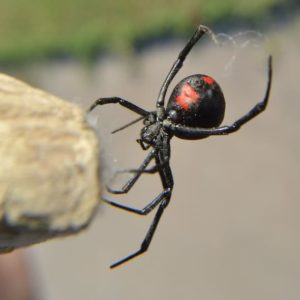
Latrodectus Mactans – Southern Black Widow
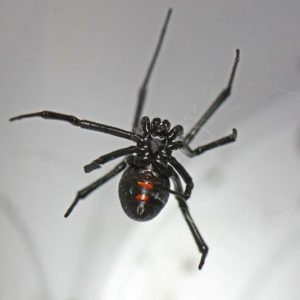
Latrodectus Variolus – Northern Black Widow
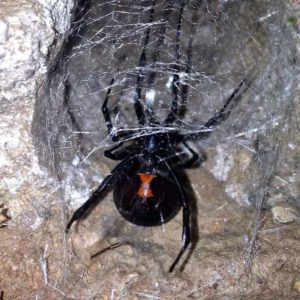
Latrodectus Hersperus – Western Black Widow
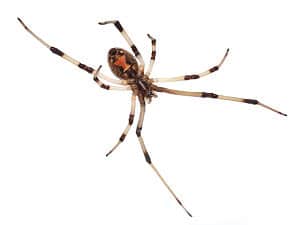
Latrodectus Geometricus – Brown Widow
Recluse Spiders in Texas
Brown recluses are some of the most feared spiders in the United States. While they occur throughout most of Texas, sightings and bites are actually quite rare as recluses prefer undisturbed, isolated habitats. Brown recluses are medium-sized spiders with a body length of no more than 3/4 in (19 mm). Their legs are long and slender. They can best be identified by their eye pattern with six eyes (most spiders have eight eyes). If you prefer not to get too close, the darker brown violin shape on the spider’s back is another great identification marker.
Bites of brown recluses can cause severe skin necrosis, and you should consult a medical profession if you are bitten. To learn more about brown recluses and what to do in case of a bite, check out the detailed article below.
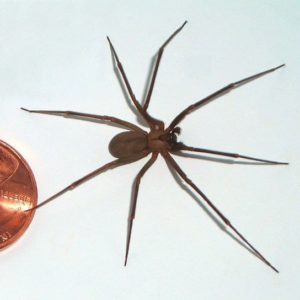
Loxosceles reclusa – Brown Recluse
Other spiders in Texas that bite
Next to the medically significant widow and recluse spiders, here are some of the less-venomous spiders of Texas that are known to bite. You can click on the individual images or links to see more pictures and find more information about the spider.
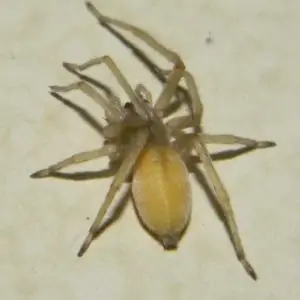
Cheiracanthium Mildei – Northern Yellow Sac Spider
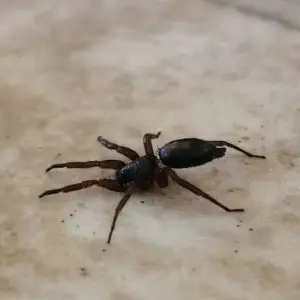
Herpyllus Ecclesiasticus – Eastern Parson Spider
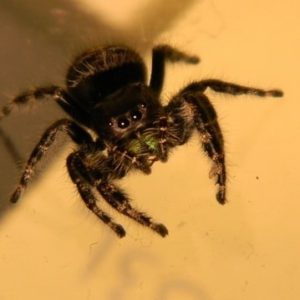
Phidippus audax – Daring Jumping Spider
Big Spiders in Texas
Everything is bigger in Texas! Even the spiders? Well, to some extent, that may be true. The largest spiders found in Texas are Carolina wolf spiders that can reach a leg span of up to 4 in (100 mm) and tarantulas that can reach a similar length with an even larger body mass. There are six species of tarantulas in Texas and the most commonly found species is the Texas brown tarantula (Aphonopelma hentzi). Other large spiders found in Texas are grass spiders, huntsman spiders and fishing spiders.
Some older sites report sightings of potentially dangerous hobo spiders in Texas. Both facts, about hobo spiders occurring in Texas and being dangerous are urban myths. In the U.S., hobo spiders are only found in the Pacific Northwest and they are not known to be more aggressive or more dangerous than other funnel-web spiders like grass spiders.
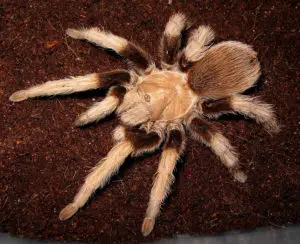
Aphonopelma chalcodes – Arizona blonde tarantula
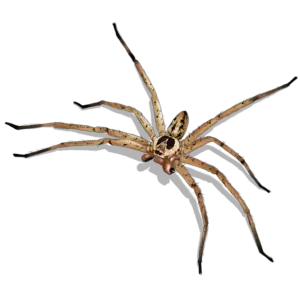
Heteropoda venatoria – Pantropical huntsman
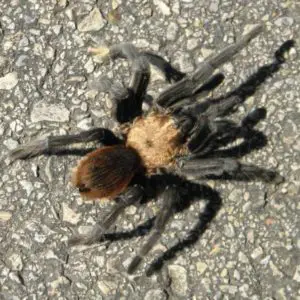
Aphonopelma Hentzi – Texas Brown Tarantula
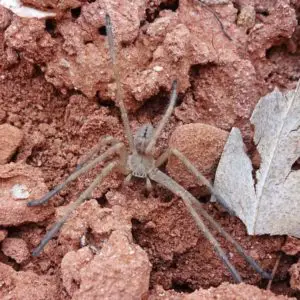
Olios Giganteus – Giant Crab Spider
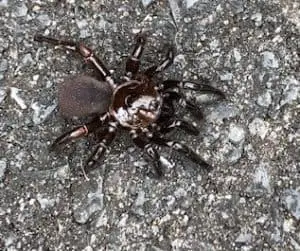
Ummidia – Trap-Door Spider
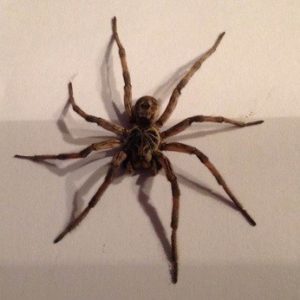
Lycosidae – Wolf Spider
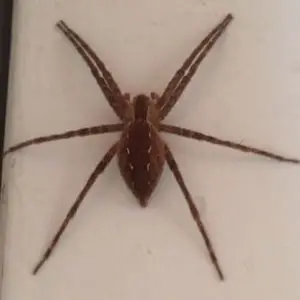
Pisaurina Mira – American Nursery Web Spider
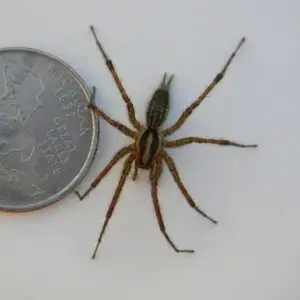
Agelenopsis – American Grass Spider

Dolomedes – Fishing Spider
Texas House Spiders
Some spider species just feel more comfortable inside homes than outside in the garden or forests. The most commonly found spiders in Texas houses are the following:
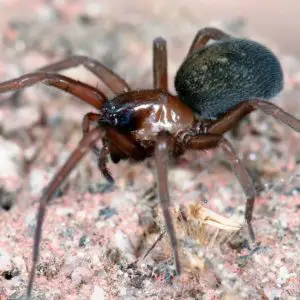
Metaltella Simoni – Hacklemesh Weaver
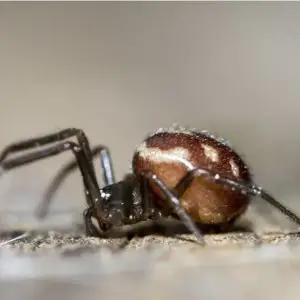
Steatoda Grossa – False Black Widow Spider

Herpyllus Ecclesiasticus – Eastern Parson Spider
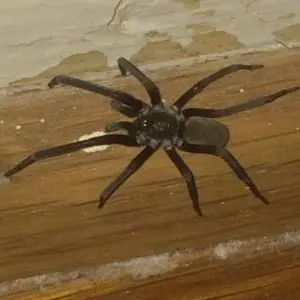
Kukulcania Hibernalis – Southern House Spider
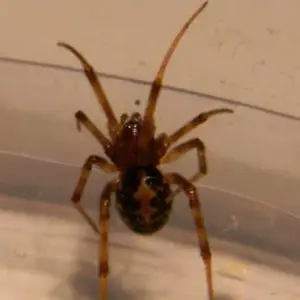
Steatoda Triangulosa – Triangulate Cobweb Spider
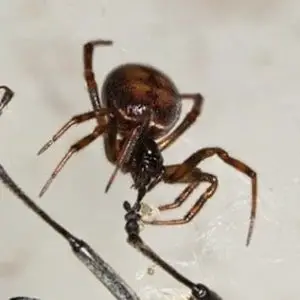
Steatoda Bipunctata – Rabbit Hutch Spider
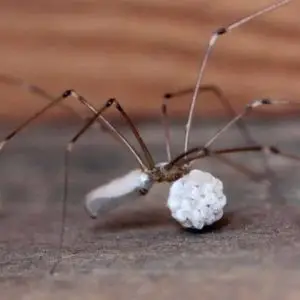
Pholcidae – Daddy Long-Legs or Cellar Spider
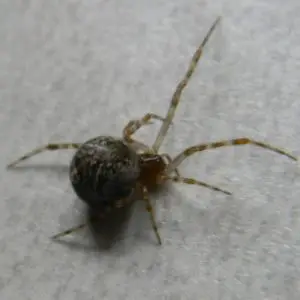
Parasteatoda tepidariorum – The Common House Spider
Jumping Spiders in Texas
With almost 150 species, jumping spiders (Salticidae) are the largest spider family in Texas. Jumping spiders are small to medium sized spiders (max. body size 1 in) with relatively short legs. They have the ability to jump and are hunter spiders and don’t spin any webs to catch their prey. The commonly seen zebra jumping spider is one of the most common small black and white spiders found in Texas. Here is an overview of all common jumping spiders in Texas:
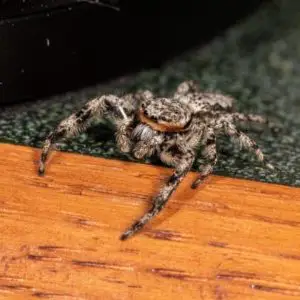
Platycryptus Undatus – Tan Jumping Spider
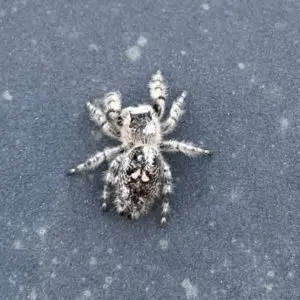
Phidippus Regius – Regal Jumping Spider
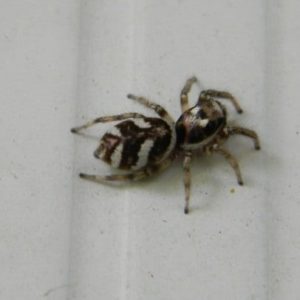
Salticus Scenicus – Zebra Spider
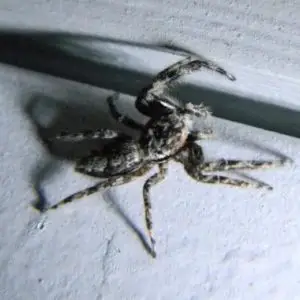
Menemerus Bivittatus – Gray Wall Jumper

Phidippus audax – Daring Jumping Spider
Orb weaver spiders in Texas
Orb weaver spiders are often found in forests or our gardens where they build large impressive (and sometimes annoying) orb-shaped webs. Orb weavers come in a variety of colors and shapes. The most commonly found orb weavers in Texas are banana spiders (Trichonephila clavipes), Argiope garden spiders and spotted orb weavers. Here is an overview of the most common orb weavers in Texas:
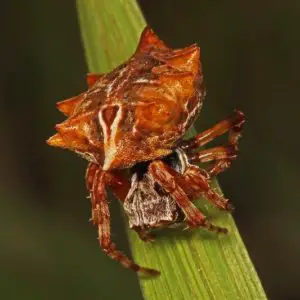
Acanthepeira Stellata – Starbellied Orb Weaver
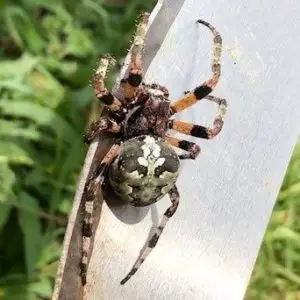
Araneus Bicentenarius – Giant Lichen Orb Weaver
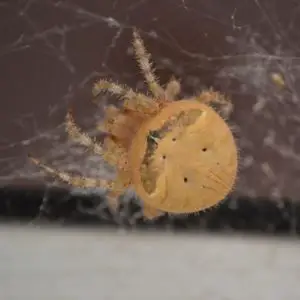
Araneus Gemmoides – Cat-Faced Spider or Jewel Spider
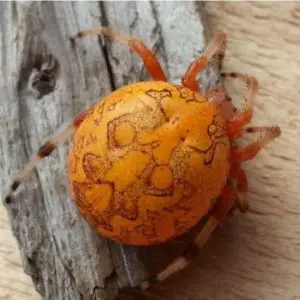
Araneus Marmoreus – Marbled Orb Weaver
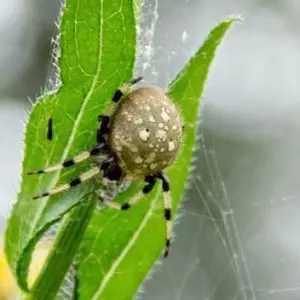
Araneus Trifolium – Shamrock Spider
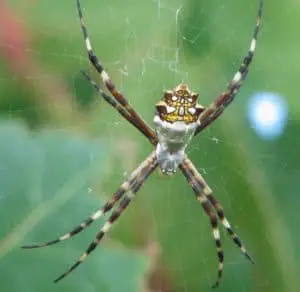
Argiope Argentata – Silver Garden Spider
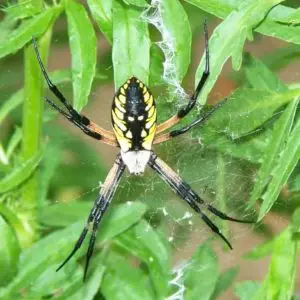
Argiope Aurantia – Black and Yellow Garden Spider
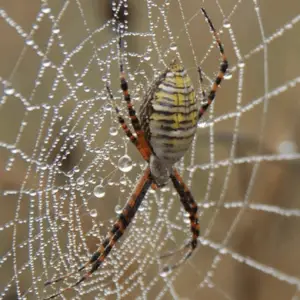
Argiope Trifasciata – Banded Garden Spider
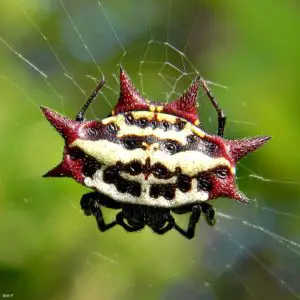
Gasteracantha Cancriformis – Spinybacked Orb Weaver
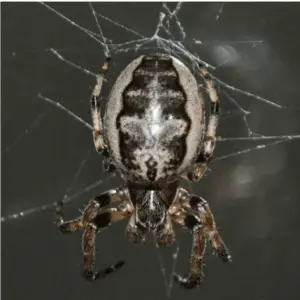
Larinioides Cornutus – Furrow Spider
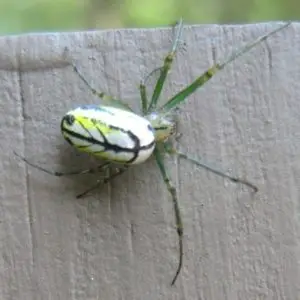
Leucauge venusta – Orchard Spider
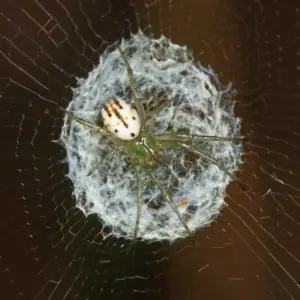
Mangora gibberosa – Lined Orbweaver
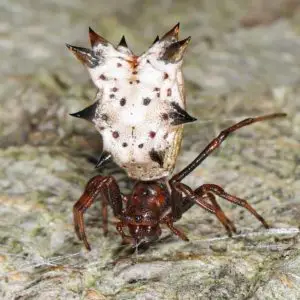
Micrathena gracilis – Spined Micrathena
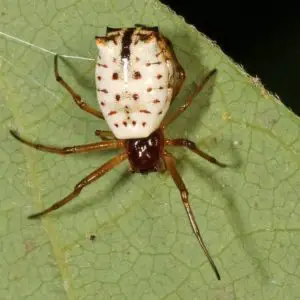
Micrathena mitrata – White Micrathena
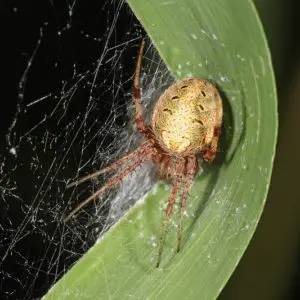
Neoscona Arabesca – Arabesque Orb Weaver
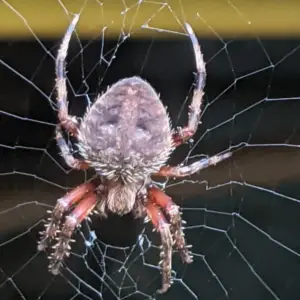
Neoscona crucifera – Spotted Orb Weaver
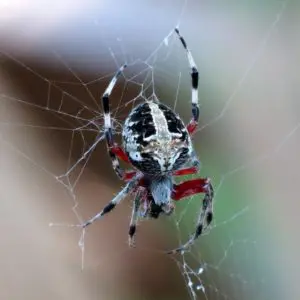
Neoscona domiciliorum – Red-femured Spotted Orbweaver
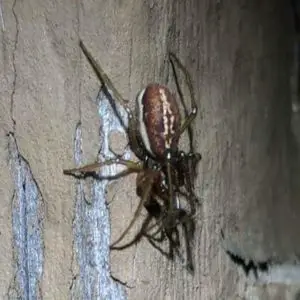
Pachygnatha
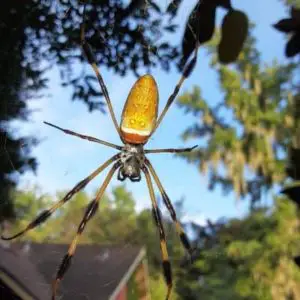
Trichonephila Clavipes – Banana Spider

Tropical Orb Weaver – Eriophora Ravilla
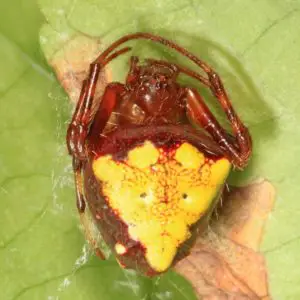
Verrucosa Arenata – Arrowhead Spider
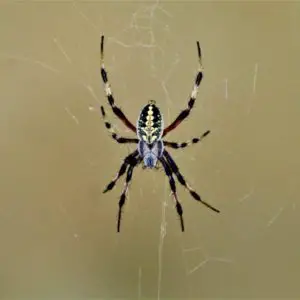
Western Spotted Orb Weaver – Neoscona Oaxacensis
Other common spiders in Texas
Next to the large spiders, common house spiders, jumping spiders and orb weavers, Texas is home to a number of crab spiders and several other ground spiders. Here is an overview:
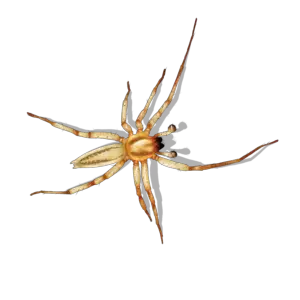
Hibana – Ghost Spider

Heteropoda venatoria – Pantropical huntsman
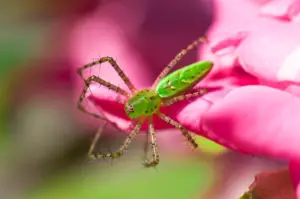
Peucetia viridans – Green Lynx Spider
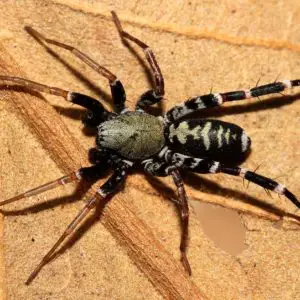
Castianeira Longipalpa – Long-Palped Ant Mimic Sac Spider
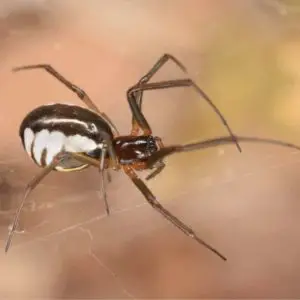
Frontinella Pyramitela – Bowl and Doily Spider
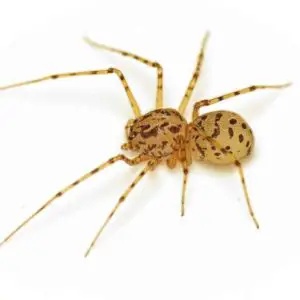
Scytodes Thoracica – Spitting Spider
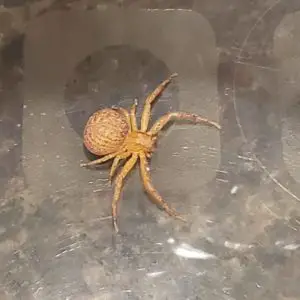
Xysticus Funestus – Deadly Ground Crab Spider

Olios Giganteus – Giant Crab Spider
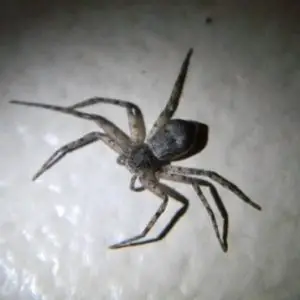
Philodromus – Running Crab Spider
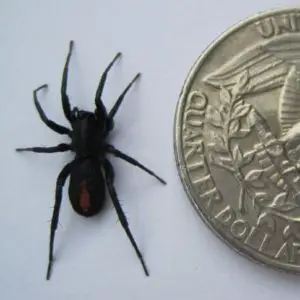
Castianeira Descripta – Red-Spotted Ant Mimic Spider
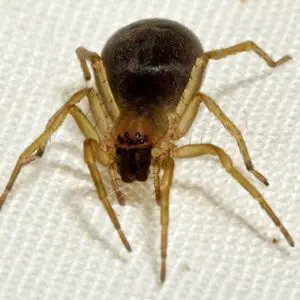
Clubiona – Leaf-Curling Sac Spider
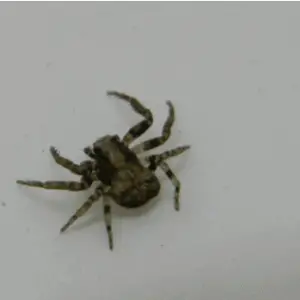
Xysticus – Ground Crab Spider
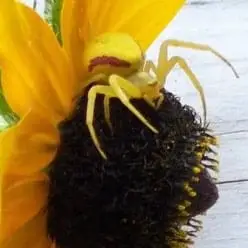
Misumena – Flower Crab Spider
Texas Spider Identification
If you have found a spider in Texas that is not on this article or that you cannot identify, head over to our spider identification page. We have built a spider identification tool where you can answer a couple of questions and the tool will show you a list with potential matches. If that still fails to identify your spider, you can take a photo of your Texas spider and upload it on that page. Our experts will give their best to identify the spider for you and get back to you as soon as possible.
